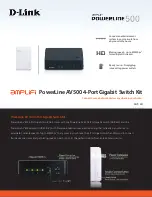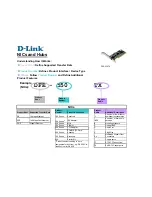
IFS NS3502-8P-2S User Manual
552
Therefore, IP address pool management is done by the server and not by a human network
administrator.
Dynamic addressing simplifies network administration because the software keeps track of IP
addresses rather than requiring an administrator to manage the task. This means that a new
computer can be added to a network without the hassle of manually assigning it a unique IP
address.
DHCP Relay
DHCP Relay is used to forward and to transfer DHCP messages between the clients and the
server when they are not on the same subnet domain.
The DHCP option 82 enables a DHCP relay agent to insert specific information into a DHCP
request packets when forwarding client DHCP packets to a DHCP server and remove the specific
information from a DHCP reply packets when forwarding server DHCP packets to a DHCP client.
The DHCP server can use this information to implement IP address or other assignment policies.
Specifically the option works by setting two sub-options: Circuit ID (option 1) and Remote ID
(option2). The Circuit ID sub-option is supposed to include information specific to which circuit
the request came in on. The Remote ID sub-option was designed to carry information relating to
the remote host end of the circuit.
The definition of Circuit ID in the switch is 4 bytes in length and the format is "vlan_id"
"module_id" "port_no". The parameter of "vlan_id" is the first two bytes represent the VLAN ID.
The parameter of "module_id" is the third byte for the module ID (in standalone switch it
always equal 0, in stackable switch it means switch ID). The parameter of "port_no" is the
fourth byte and it means the port number.
The Remote ID is 6 bytes in length, and the value is equal the DHCP relay agents MAC address.
DHCP Snooping
DHCP Snooping is used to block intruder on the untrusted ports of the switch device when it
tries to intervene by injecting a bogus DHCP reply packet to a legitimate conversation between
the DHCP client and server.
DNS
DNS is an acronym for
D
omain
N
ame
S
ystem. It stores and associates many types of
information with domain names. Most importantly, DNS translates human-friendly domain
names and computer hostnames into computer-friendly IP addresses. For example, the domain
name www.example.com might translate to 192.168.0.1.
DoS
















































